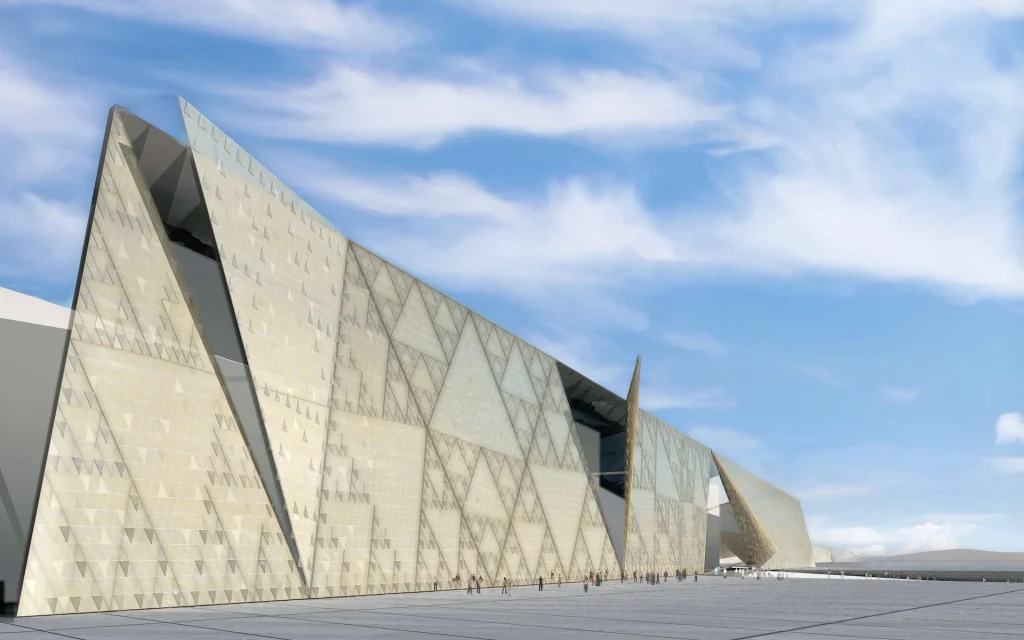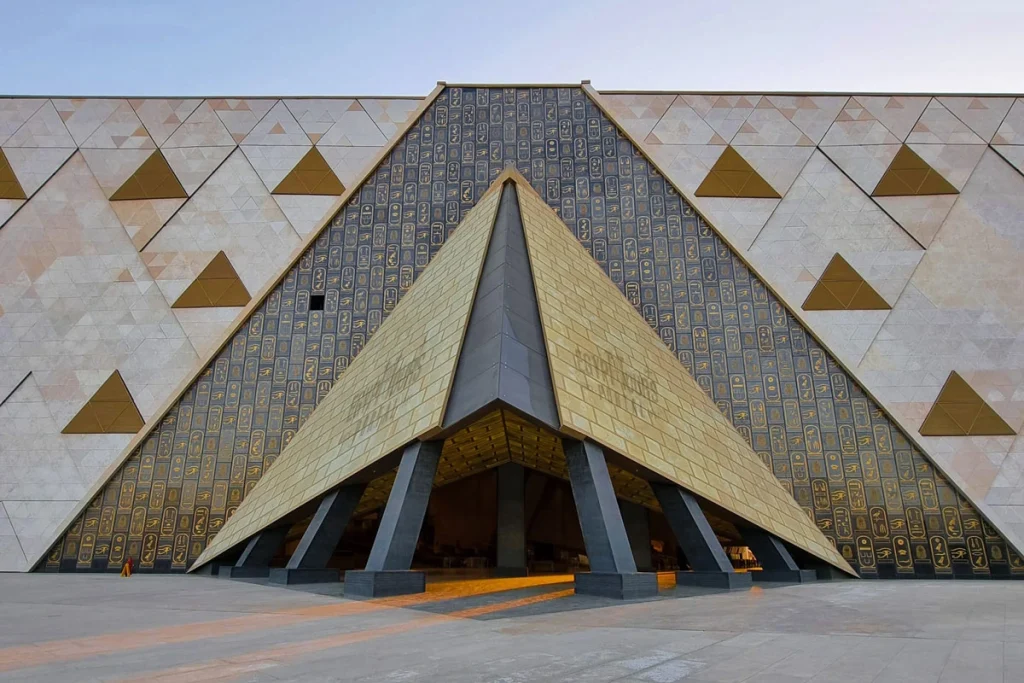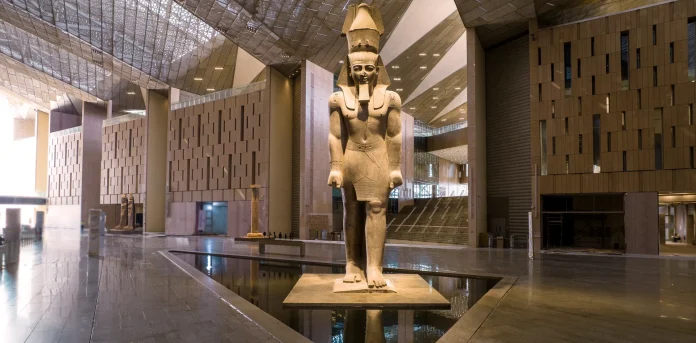(al-Matḥaf al-Maṣriyy al-Kabīr)—with its elegant Egyptian edifice offers an ode to the luxury of the country’s history and heritage. Standing as a modern marvel—just minutes off the gargantuan Giza Plateau—in the seductive shadow of the Great Pyramids, it is not just any other museum but an architectural masterpiece: a gateway to the grandeur of ancient Egypt that has drawn droves to its sandy shores. For centuries, poets have offered paeans to the pharaohs of Egypt, but none of them can compare to the Grand Egyptian Museum’s architectural poetry. With a sophisticated, state-of-the-art technology twist, the museum accentuates the allure of Egyptian antiquity.

The Architecture
Commissioned by the Egyptian Ministry of Culture, preparation for the museum began nearly 30 years ago, but construction continued to get postponed due to socio-political upheavals in the country. For instance, the 2008 Financial Crisis and the Arab Spring derailed development. In 2011, Architecture studio Heneghan Peng was given the commission. Completed late last year, the museum’s architectural design coalesces conventional and contemporary elements of Egyptian civilisation. The edifice is a textured, translucent sandy stone wall that is an extension of the adjacent Great Pyramid of Giza, but the sleek shine of it lends a luscious glow.
The museum’s structure, inspired by ancient Egyptian architecture, features a chamfered triangle design with pyramid-like slices of glass and stone. Triangle motifs dominate, particularly on the limestone-panel facades, with very few right angles. The color palette includes shades of brown and grey, from amber onyx at the entrance to Egyptian granite and Trieste limestone, reminiscent of the materials used for Rameses and the Giza pyramids. David Rogers of Global Construction Review notes a similar scheme in the New Administrative Capital buildings, suggesting a national aesthetic.
Inside, the Grand Staircase, flanked by colossal statues of ancient Egyptian pharaohs, greets visitors. Its scale and hieroglyphic-covered panels set the tone for the museum’s grandeur.

The Artefacts
Initiated by former President Hosni Mubarak, the Grand Egyptian Museum will house over 100,000 artifacts, including the complete Tutankhamun collection, displayed together for the first time since their discovery by Howard Carter. The museum will also feature the 36-foot statue of Rameses II, the “Khufu ship” from 2000 BC, and relics spanning Egypt’s prehistoric, Greek, Roman, and Arab periods.
The exhibition spaces of the Grand Egyptian Museum (GEM) are meticulously curated to showcase the richness of ancient Egyptian civilization. Artefacts are displayed to highlight their historical significance, with each piece narrating its own story. The galleries are arranged thematically, offering visitors a deep dive into various aspects of ancient Egyptian culture. Besides key artefacts from the Egyptian Museum in Cairo, the collection will feature pieces from museums in Luxor, Minya, Sohag, Assiut, Beni Suef, Fayoum, the Delta, and Alexandria.
The museum also boasts a comprehensive library and research centre, making it a global hub for Egyptology. For newcomers to archaeology, GEM will offer lectures on art and exhibitions.

Significance to Egypt
The GEM stands as a symbol of Egypt’s commitment to preserving its heritage. As the world’s largest archaeological museum, it reclaims the narrative of Egypt’s ancient civilization, shifting from Western interpretations to an authentically Egyptian voice. It serves as a bridge between the past and present, providing a deeper understanding of the socio-cultural practices of ancient Egypt.
Deeply embedded in Egypt’s identity, the museum is a source of national pride, celebrating a civilisation that shaped human history. Beyond being a treasure trove of relics, GEM is a cornerstone of cultural tourism, ensuring Egypt’s rich legacy continues to inspire and educate future generations worldwide.





